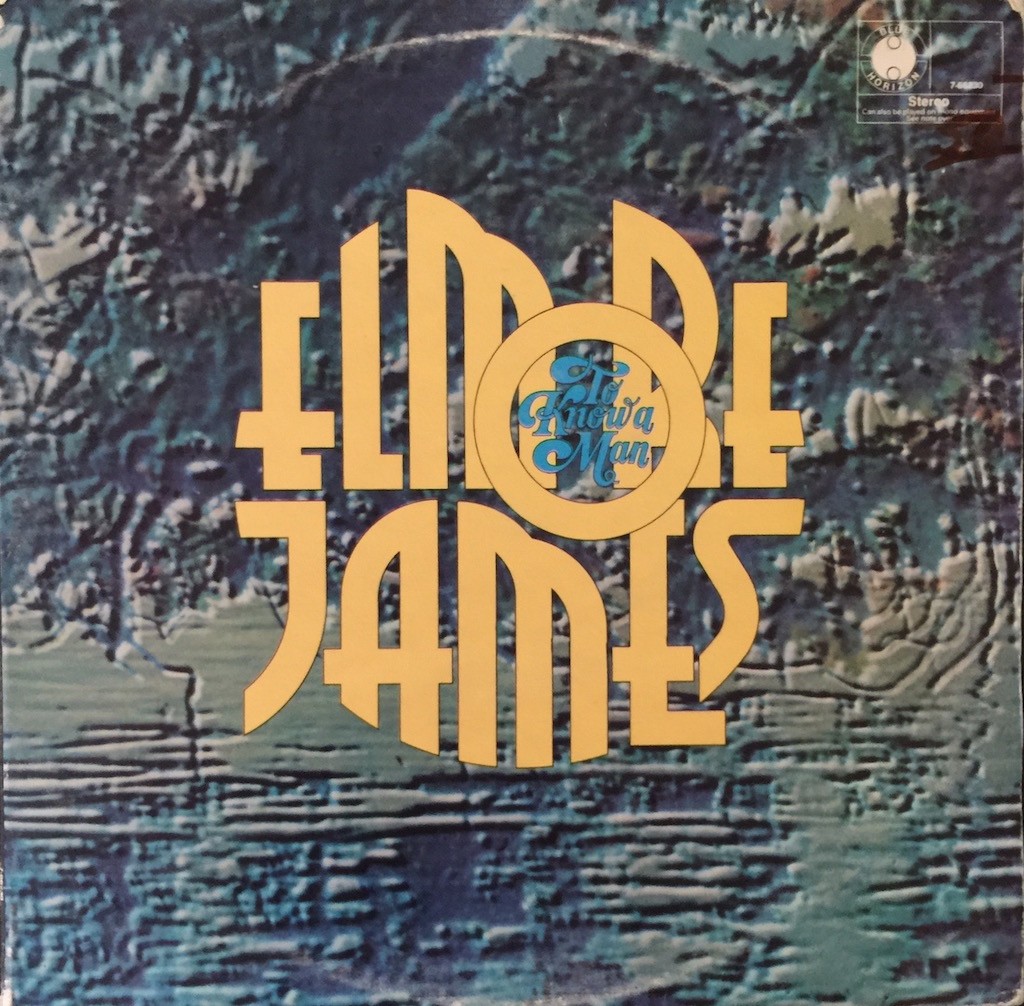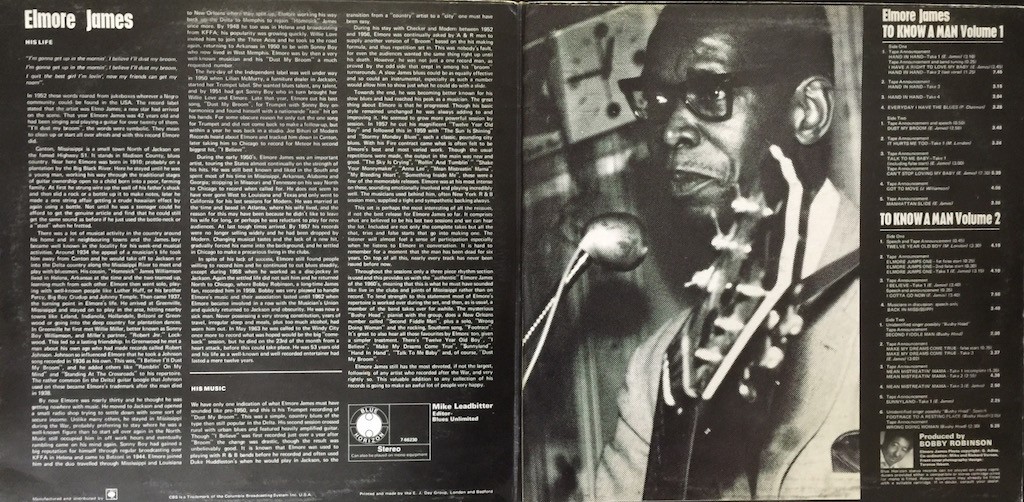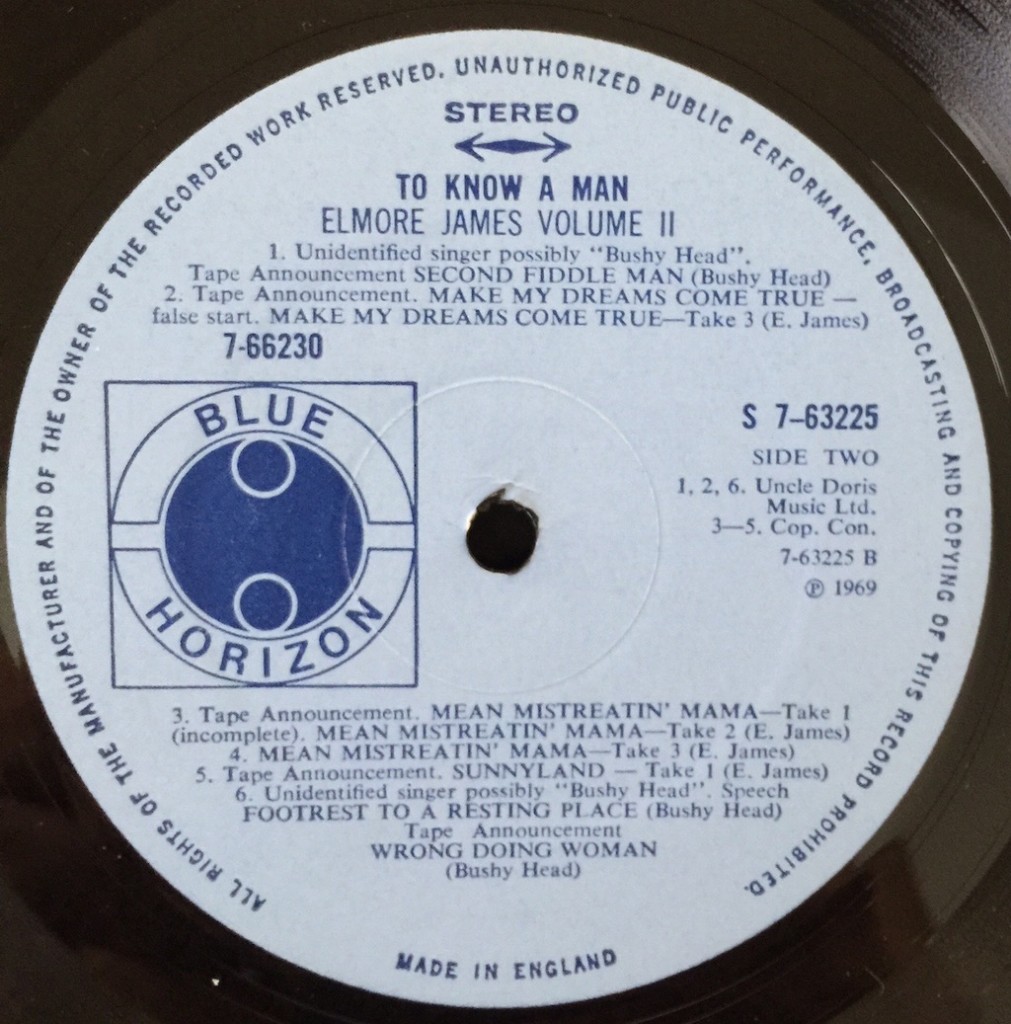
I’ve now had the opportunity to listen more fully to the Blue Horizon two-record set of Elmore James’ late studio tracks contained on To Know a Man. As described in my efforts to track down the origin of James’ recording of “Sunnyland” that I first heard in 1970, To Know a Man contains the “late” Elmore James sessions recorded near the end of his life. Although by no means “audiophile” recordings, this record set is not just something for completists.

If you like the gritty, distorted sound of Elmore’s slide playing, you’ll like this set for a couple reasons: first, the recordings are decent; pretty simple, straightforward, no involved arrangements, a basic rhythm section and piano. Second, he covers a lot of his well-known songs and the recordings are sometimes surprising; false starts, re-takes and studio chatter provide an authentic quality. They also sound pretty good; the snare is very crisp, the upper registers of the piano are fine, but the bass lacks weight and heft.

The simplicity of the recording –I’m assuming a two-track recorder was used—makes for an uncomplicated, and uncongested sound. At times the sound is a bit on the bright side, but I can live with that to hear “into” the studio: you do get a sense of the room and the placement of the instruments, not something always heard on older blues records.
The recordings are almost like a rough “dump” of the studio tapes onto vinyl: the tape is already rolling before the playing begins, you hear direction from the producer or engineer, or the announcement of a “take” and when the band starts up, you feel like you are part of the event: since most of the tracks are up-tempo, and everybody is usually playing at once from the get-go, they all suddenly start playing after these preliminaries, on tempo and in tune. The false starts and re-takes add to the feeling you are “there” or listening to raw studio tape.
Elmore’s playing is, for the most part, superb, and has that characteristic ragged, fuzzy slide sound that comes from an overloaded tube amp or tweaked pick-ups (or both). His singing is on pitch and most of the songs are fast-paced, whether straight blues numbers or rollicking R & B. Almost all of the tracks are short cuts (I don’t know if the original intention was to release them as singles, but that was certainly how many of the Chicago blues recordings were made and released). And as we learned in our Sunnyland quest, this was the first time—on this album set—that the late, “hot”-sounding version of that particular song was released. According to the liner notes, nearly every recording here was released for the first time on this album, something I have do not have the time to verify.

This is the kind of record you play for yourself, not to show off your system. That said, these are the records I often enjoy most.